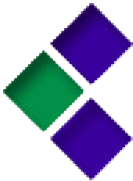Career Document Refresh or Start Over with New Documents?
Evaluating your career tools and professional brand is usually a good idea. But sometimes, it can be challenging to know if the career documents need a refresh or if the best step is to start over with new career documents. Consider the following to help clarify the next steps.
Change Is Continual
Resumes continually evolve, so simple things like removing an address or updating colors can make a big difference. Optimizing LinkedIn profiles can support career changes.
Even professionally created LinkedIn profiles and resumes can become outdated based on career goals, industry shifts, job market changes, and technology upgrades. Were the documents created more than two years ago? Do the documents target a specific job that is no longer the career focus? If the answer is yes, it may be time to refresh the content by adding new achievements.
Can’t remember the last time the career documents were created? Or has it been 5+ years since working on the career documents? Do the documents look dated? Then the best next step is starting over with new career documents promoting recent achievements, training, and an updated professional brand.
Additional career document considerations include removing older work experience, removing experience that does not support career goals, or adding content to show newly acquired skills and training supporting job alignment while making the documents impactful.
Different job levels and varied industries have unique resume expectations.
Professional Switch
When considering a career change, evaluate the job and industry. For example, higher education may expect a CV with publications and teaching experience. Verify that career documents promote the right talents and experience. Moving a career across two areas—a different job and a new industry—typically will require starting over with new career documents to ensure content alignment.
Evaluate how the career documents present skills, talents, and accomplishments. Does the content align with your career goals? If yes, then a document refresh is needed. For example, a UX Designer may have team projects providing experience with UX research contributions to support a job change into a UX Research role. A career document content refresh may be all that is needed to showcase impactful UX Research contributions.
Many jobs need different skills, and hiring managers want to see aligned job experience. When there is a significant job change, it means starting over to create career documents that show the right talent. For example, a job shift from an individual contributor level to a new manager role requires career documents highlighting different talents and skills.
The Reader
While career documents are about you, they are written for the reader, providing valuable information as to why your experience aligns with the job’s needs. Readers include applicant tracking software (ATS) that filters applicants based on keywords and other parameters. HR assistants, recruiters, and administrators are readers who quickly review the documents for employment details. And the hiring leader who selects candidates for interviews based on the career document content.
Keeping career documents updated with promotions, training, and other significant impacts can help when unexpectedly presented with an ideal job. Evaluate career documents annually to capture new skills, add affiliation contributions, and update accomplishments.

